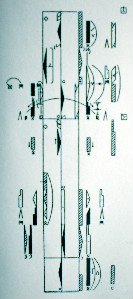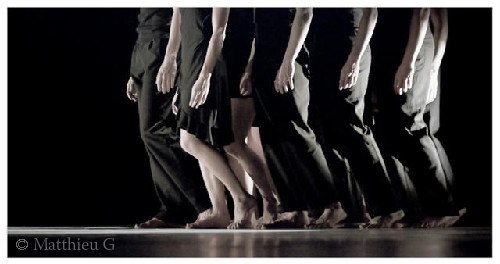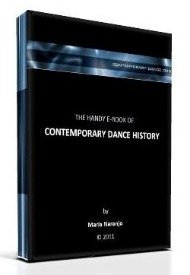DANCE THEORY
Dance theory has become nowadays a wide subject. It is a young academic discipline that was born around the beginning of the XX century.
Also known as dance research, it could include the analytic and reflexive study of as many aspects related to dance as our language allows us to imagine…
But, concerning what it is currently being done in some universities and humanities departments around the world, we could say there are three or four main branches:
1. Philosophers dance theory.
The work of philosophers concerning arts is usually called aesthetics. In our case, they produce written descriptions of dance, reviews and philosophical deliberations about the components and values of our art.
Sometimes they elaborate interpretations of particular dance pieces, considering the symbolic dimension of its elements. This practice is called semiotics or hermeneutics. They also care about the construction of dance history or dance’s relation to other aesthetic languages like music, visual arts, architecture and others.
As philosophers work with language, another one of their tasks is to question, list or even invent the meaning of words (or concepts) that are used by the dance community… (...? ... yes!)
As any autonomous practical discipline, dance has of course its own vocabulary or terminology invented by dancers, choreographers or teachers. According to philosophers, some words are more important than others because they determine reality… and they work over those…
Before giving you an example of that, remember that you can visit our page about dance terms, in case you are looking for a definition.
So, for example, a very important concept in the dance universe is carried by the word ‘body’. This word has been of such importance for dance theory, that there’s actually an entire research branch called ‘theories of body’. The word has been studied from various scientific perspectives till the point of being denied as an appropriate concept (that is ONE theory…)!
If you’d like to go deeper into this subject, I’d recommend you the following starting readings:
Bernard, Michel. Le corps. Editions du Seuil, 1995. or
Bernard, Michel. De la création chorégraphique. CND, 2001.
There’s another common question that relates to our specific dance modality and that concerns the dancers community, as well as the general audience…: WHAT IS CONTEMPORARY DANCE?
Believe me… I’ve heard this question… and not just a few times!
Well, it’s the dance theory constructors who help us with these situations.
There’s a book I’d recommend you to expand on that specific topic (originally in French): Louppe, Laurence. Poétique de la danse contemporaine. Contredanse, 2000.
As I said above, this is a really wide subject. Those are just some popular examples that should help you understand what dance theory is about.
If you’re interested in the philosophers branch and want more information, just contact me. I can help you find authors, share documents and so on…
2. Choreologists dance theory.
The word choreology is commonly used to talk about two different (but complementary) disciplines: movement analysis and dance notation.
Movement analysts study movement itself, frequently considering its shape, dynamics, or functionality. One of the most spread tendencies (but not the only one) is the one that uses Rudolph Laban’s movement theory as theoretical framework.
The LIMS (Laban/Bartenieff Institute of Movement Studies) describes it like this:
“Laban Movement Analysis provides a comprehensive vocabulary and analytic framework for the description of human movement. Using LMA, one can systematically look at a unit or phrase of movement in terms of the four major movement components of Body, Effort, Shape and Space. These basic components can be identified and examined alone and in relationship to each other.”
As I said above, choreology refers to dance notation too.
According to historians, humanity has evidence of more than 80 invented systems or languages that have been designed to record dance or human movement. Nowadays, only a very few among those are in use. The most known are labanotation (or kinetography Laban) and Benesh notation.
Benesh notation was invented by Rudolf Benesh around the middle of the XX century. His system is mainly applied to dance (mostly ballet) and is commonly used by companies who maintain their repertory thanks to the help of dance writers.
Like Western music, Benesh notation uses a five line stave that is read from left to right with bar lines to mark the passage of time. The five lines coincide with the head, shoulders, waist, knees and floor (from top to bottom) and additional signs are used to notate the dimension and quality of the movement.

The knowledge of Benesh notation doesn’t only have this practical application. Benesh choreologists affirm that it develops a great sense of the study of movement. That’s why it is considered as a theoretical discipline too.

On the other hand, there’s Labanotation or Kinetography Laban.
This system was invented by Rudolph Laban at the beginning of the XX century and it might be the most effective language to describe not only dance but human movement in general.
Laban direction’s signs are placed over a vertical staff which is read from the bottom to the top. The form and texture of a sign indicates the movement’s direction and its length. The place in which the sign is written over the staff tells the part of the body that moves and the moment of execution. Successive movements are written vertically, simultaneous movements horizontally, all over the same staff.
The most important centers for the study of this dance notation system in Europe are the Laban Centre (Great Britain), the University of Surrey (Great Britain), The Folkwang Hochschule (Germany), the Musicology Institute (Hungary) and the CNSMD (Paris).
There are two other important institutions that support kinetography Laban. The Dance Notation Bureau, which was founded in 1940 and is a main center for resources and studies, and The ICKL (International council of kinetography Laban), which was created in 1959 and stands as an information referral and exchanges place for specialists. It publishes dance scores and organizes congress every two years.
Click here to read a great labanotation article that expands on this topic.
3. Social sciences dance theory.
Another branch in dance theory is the one produced by anthropologists and sociologists.
Closer related to philosophers, they explore dance ethnic features, considering aspects of dance as a medium of cultural and social interaction. Features of different dance genres and styles are analyzed according to their social settings and cultures.
The cultural studies trend could be classified among these dance theory lines. Researchers concentrate on how dance features relate to matters of ideology, social class, nationality, ethnicity, sexuality, gender and others.
One example of this is the work accomplished by the anthropologist Andrée Grau (Roehampton University).
Coming from a research line founded by John Blacking (1928 -1990) (ethnomusicologist and anthropologist himself), she started her dance theory production with an encounter with the Tiwi community in Australia. One of her discoveries was that dancer’s space distribution was determined by kinship relations. (…see the difference with what would determine space distribution in dance as a contemporary art in western culture?)
Yes, it is such a simple example. Dance theory, ethno choreology, dance anthropology and so on, are so extensive… I know. I’m just providing some introductory elements…
4. Medical field’s researches in dance therapy.
I mention this last branch here, because it makes use of part of the theoretical tools and knowledge from the other dance theory branches, to work on its own goals. But, as its final intention is to ‘cure’ people by the means of dance, it would rather be considered differently as a dance theory discipline.
Written by Maria Naranjo, 2010.
I hope this summary helps you make yourself an idea of what the discipline is about. Dance theory is really a large topic (mostly if you deepen in its literature). So, if you’d like to go on and need any help, just let me know…!
Related threads:
Forum for dance questions about theory and history
How to analyze a choreographic piece ?
What is the purpose of contemporary dance ?
There are many other interesting threads there. Just visit our forum for dance questions about theory and history and browse!
Ask a question
Return from Dance Theory to Contemporary Dance Home Page
The handy e-book of CONTEMPORARY DANCE HISTORY:
The Dance Thinker is our occasional E-zine. Fill in the form below to receive it for free and join us.
Read:
"The Dance Thinker"
BACK ISSUES
Post contemporary dance announcements (workshops, auditions, performances, meetings and important news... it is free.)




